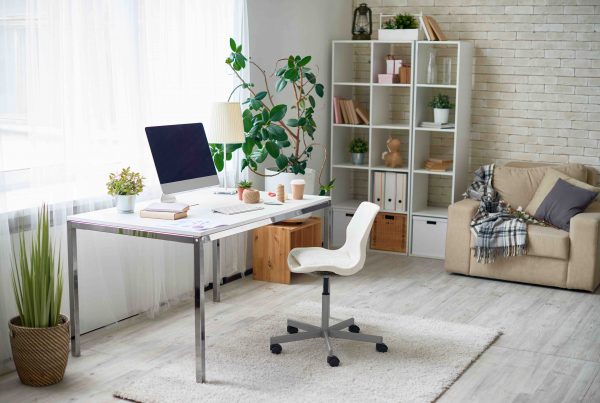Whether you’re finally saying goodbye to adult children, licking your wounds after a divorce, or simply tightening your budget and freeing up some cash flow for a happy retirement – down-sizing your home can be an emotional time. But there are ways to make it work for you – and tips to make your next property buy feel like home, without the clutter.
1. Make a List – What You Love vs What You Don’t
There are things you can’t live without and things that you really need to jettison. The challenge of downsizing is to get your emotions in check to help you tell the difference.
No matter how unsentimental you are, there will always be some things that you can’t part with – precious photo albums, historic medals, plus all those important papers, such as birth certificates and financial records. But do you really need those certificates for achievement that date back to your primary school years now that you’re closer to retirement? For some people, the answer is a firm ‘yes’ – childhood memories form an important legacy for family heritage.
But for others, many things that have been stacked and stored for years have been packed away out of laziness and overwhelm.
Making a list is a great start – and might help you realise that those old magazines you’ve been saving since 1993 don’t need to be kept another day.
2. Start Slowly – And Ease Into It
Planning makes a big difference.
Rather than feel overwhelmed by the idea of downsizing, start sorting through your possession bit by bit about 3 months before your big move to help you declutter, without the stress.
Even 2-3 hours a week one morning or evening can help you achieve amazing results. Decluttering experts cite paper as the big killer for clutter. Tackle it one box at a time and focus on photos too – putting those precious memories in albums, and making digital back-ups if you can, so all your photos are easy to access and secure.
3. Unsentimental Rooms First
Some rooms have more sentimental weight than others. It’s smart to start with the rooms with the least emotion attached to get you off to a positive, pro-active start. Rooms like the laundry, bathroom and kitchen typically house items that you aren’t so connected to – something that makes it easier to clean and tidy. Do you really need 10 mixing bowls and 4 spatulas? It’s time to let go…
The garden shed is another great place to work on. If you’re moving to a place with a smaller courtyard garden or communal garden, it’s a perfect time to get rid of your bigger garden equipment, such as ladders, lawn mowers, saws and shovels.
4. Recycle & Re-home
Sell, donate, recycle. You’ll feel better about saying goodbye to your things if you know they are going to a good cause/new home.
By being environmentally responsible and thinking about how to find your belongings a new home, you’ll be downsizing considerately and feeling good.
Even those half-used bottles of cleaning fluid, or motor oil from your garage could be appreciated by a neighbour or friend.
5. Sort It Out
Keep. Donate. Sell.
Unless things are broken beyond repair, most things you no longer want can be given away or sold for a nice little cash bonus.
Sites like Gumtree make it easy to list items for sale. If you’re not sure how to manage it, ask someone in your family or friendship circle to help you and offer them a percentage of anything that gets sold as payment for helping you list the items.
If selling seems too stressful for you, loading up the car and donating to the nearest charity is easy to do.
To help the process run smoothly and efficiently, create three piles – clearly labelled ‘keep’, ‘sell’ and ‘donate’.
If things really aren’t good enough for any of those categories, pop it straight in your wheelie bin or hired rubbish skip without a second look. If it’s not good enough for someone else, you shouldn’t hold on to it either!
6. Get a second opinion.
If waving goodbye to that dusty sewing machine you haven’t used since 1981 is too hard, it might be time for a second opinion.
A trusted friend or family member is a good place to start but if you are prepared to make an investment, there are also professional organisers for hire. They specialise in helping people just like you find stress-free ways to de-clutter and downsize.
A simple Google search should uncover plenty of options in your local area.
7. Plan for Smart Furniture Placement furniture before the move.
Got a floorplan for your new place? Perfect. If not, you can try sketching it out, so don’t worry.
Now sketch in your favourite furniture items so you can see how they will fit the new rooms.
If you end up with a picture of side tables, dressers, arm chairs and coffee tables crammed in to every available space, it’s a clear sign to get rid of some unnecessary items so you can enjoy your new home – and have room to move.
8. Colour-code or Number to Organise
Grab some sturdy cardboard boxes and create a colour or number for each room of your new house.
Now go through the contents of your existing rooms and add items to the boxes in the right order.
It’s a simple way to pack that makes unpacking at the other end so much easier. If you end up with a huge amount of boxes marked for one specific room, it’s a good prompt to take another look at the contents of the boxes and try to reduce them.
If you need advice for a home loan, business or commercial loan, self-managed super fund loan, or a vehicle or equipment finance loan, speak to a broker at Lending Specialists. We have a wealth of experience under our belt and a robust network to connect you to the right industry professional for the loan you need.










